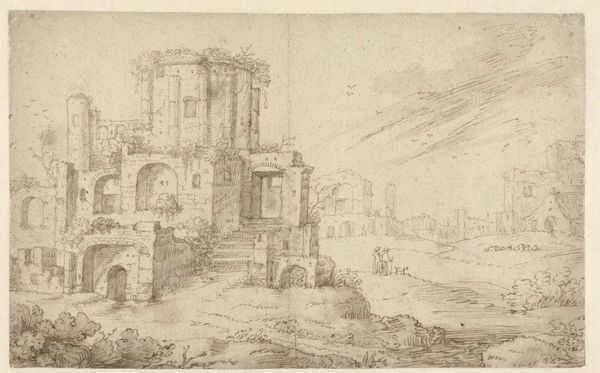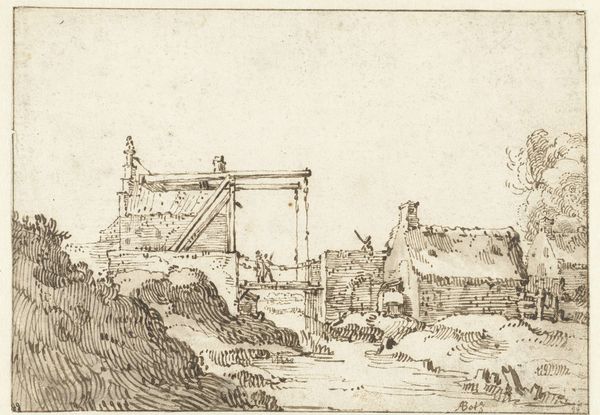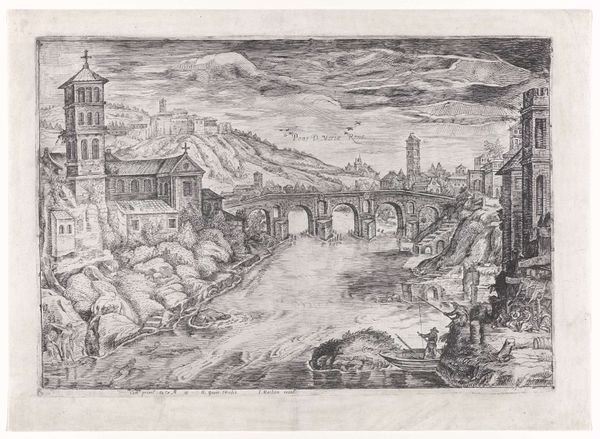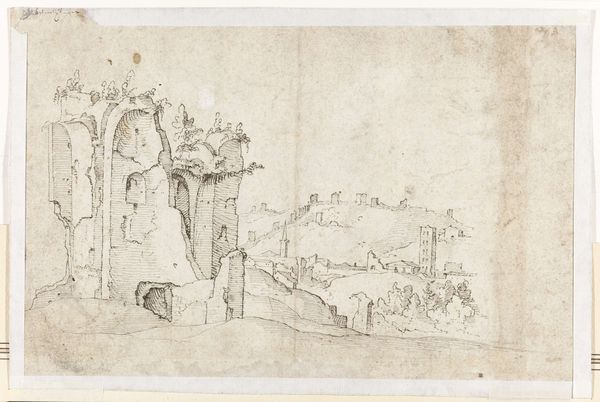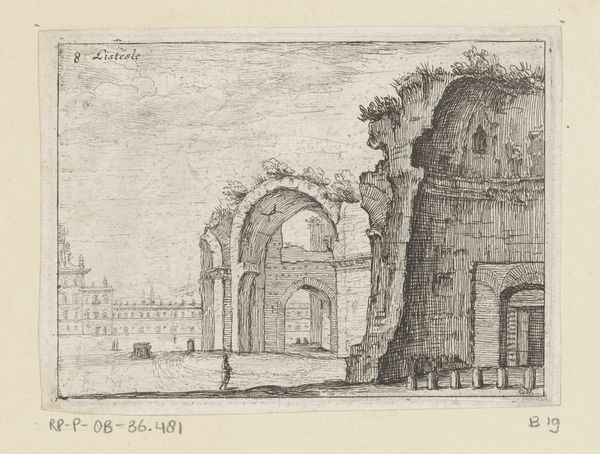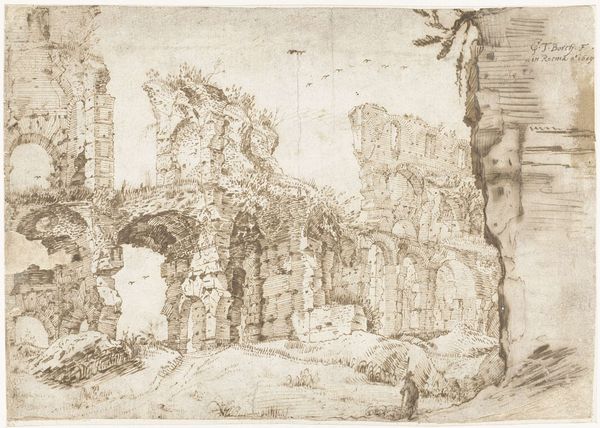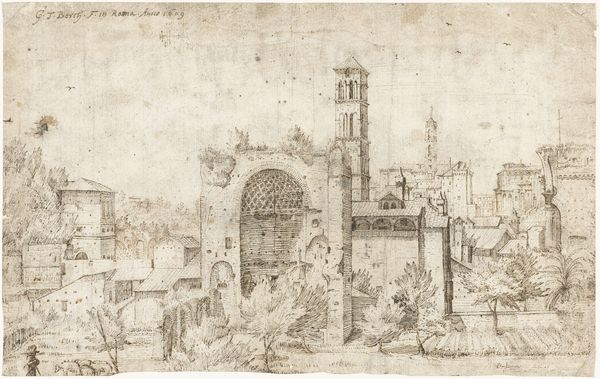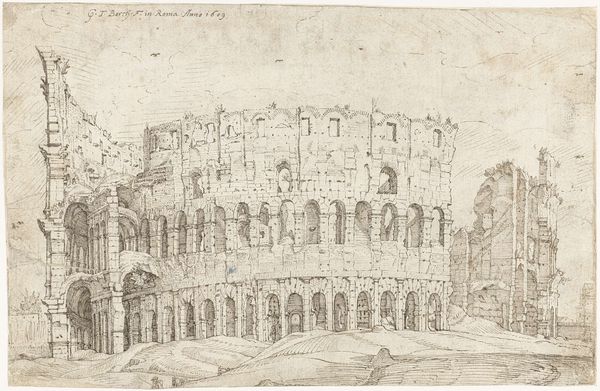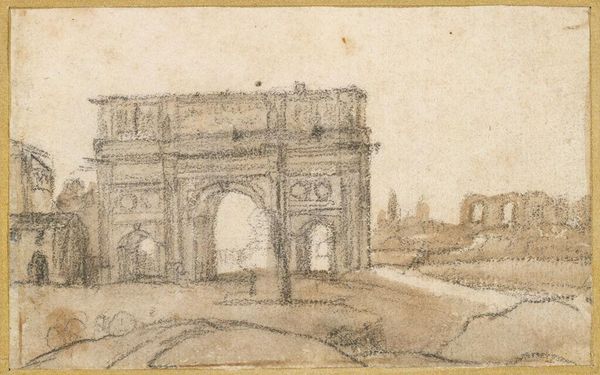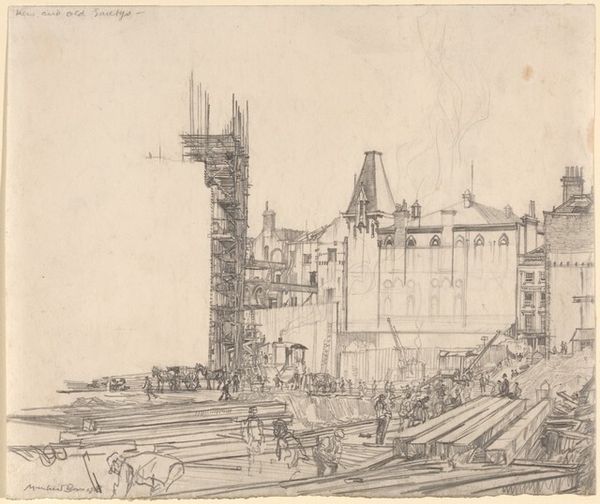
drawing, pen
#
drawing
#
pen sketch
#
landscape
#
geometric
#
pen-ink sketch
#
pen
#
cityscape
#
italian-renaissance
#
realism
Dimensions: height 157 mm, width 248 mm
Copyright: Rijks Museum: Open Domain
Editor: Here we have "Ponte Rotto over de Tiber, Rome," a pen drawing from 1609 by Gerard ter Borch. It has a stark, almost haunting quality to it, focusing on the fragmented bridge. What can you tell me about this ruin within its historical context? Curator: It’s powerful, isn't it? Ter Borch captures not just a scene, but a moment of transition. This broken bridge, the Ponte Rotto, speaks volumes about power, decay, and resilience. Consider Rome at this time: a city built on layers of history, each conquering group literally building upon the ruins of what came before. How might this image serve as a commentary on the transient nature of authority? Editor: That's a really interesting angle. It feels like a challenge to ideas of permanence, of what survives. How much does the artist’s Dutch perspective factor into the interpretation? Curator: Significantly! Ter Borch, a Northern European artist, approaches this Italian scene with a critical eye. He isn't celebrating Roman grandeur, but instead documents its fractured state. This resonates with the historical dynamics of the time. Northern Europe began challenging Southern European dominance, both culturally and economically. Do you see that critique embedded in the very lines of the drawing? Editor: I see it now. The meticulous rendering of the damage seems less like an objective recording, and more like… a deliberate exposure of weakness. Curator: Exactly! And by choosing this subject, Ter Borch indirectly critiques not just Rome, but also broader societal structures and their inherent vulnerabilities. It is, ultimately, an intersectional analysis of place, power, and identity. Editor: I never would have considered it that way. It's incredible how much social context is embedded in what I initially just saw as a landscape drawing. Curator: Art is never created in a vacuum. Analyzing those historical, social, and political layers is crucial for understanding not just the "what" but the "why" of art.
Comments
No comments
Be the first to comment and join the conversation on the ultimate creative platform.
